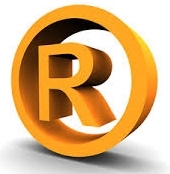
by Kathleen Lynch | Dec 2, 2014 | Trademark, Trademarks
Recently, two well known trademarks have made news. First, Hasbro, the well known toy manufacturer made an attempt to purchase DreamWorks Studios, the animation film company that brought us hits like Shrek and Chicken Run. Second, Unilever, the food conglomerate, has gone after “Just Mayo”, a San Francisco based company that makes a vegetarian alternative to mayonnaise.
What do these two matters have in common? Trademarks. Hasbro is one of the leading toy and game manufacturers, owning brands such as Transformers, Battleship, and My Little Pony. With strong trademarks comes significant value in good will associated with each brand. Hasbro, in its unsuccessful attempt to purchase DreamWorks, tried to build on that good will with the possible creation of toy and game based animated movies. While it may not be a conventional fit, the value of Hasbro’s marks enables it to consider the possibility of branching out and creating movies around already well known and valuable characters-a merchandiser’s dream.
The “Just Mayo” case emphasizes the lengths large companies will go to in order to protect their trademarks. Unilever’s case is focused on the premise that “Just Mayo” isn’t mayo. In fact, it is plant based with no eggs. Mayonnaise traditionally includes eggs. Unilever is trying to protect its brand and prevent what may be a spreading of the traditional understanding of mayonnaise. If “Just Mayo” succeeds, Hellmann’s may have to compete with vegetarian spreads such as “Just Mayo,” and their market share and trademark strength may decline.
What’s the take away here? Never underestimate the power of a trademark. While you may just be starting out, consider the value of the name and/or logo associated with your goods and/or services. Take the necessary steps to protect it. The Law Office of Kathleen Lynch PLLC is designed to help businesses such as yours protect trademarks and develop an IP strategy to help you keep ahead of the game. The first telephone consultation is free. Email us at [email protected].

by Kathleen Lynch | Nov 4, 2014 | Trademarks
This is the second in a series or posts on the basics of trademark law. The first one focused on the selection of a mark for use in connection with goods or services. Here I focus on the federal trademark registration process.
Once you’ve selected your mark for use in connection with your product or service, you should conduct a search to determine whether your mark is available for use and registration. This involves reviewing a number of different databases including the federal and state trademark databases, as well as a number of different directories for use of your mark and similar marks in connection with similar goods or services. A trademark attorney can assist you with this process.
If the mark is available for use, determine whether or not you need to register your mark with the United States Patent and Trademark Office. Federal trademark registration requires a showing that you have sold your goods or services using your mark across state lines. If your business plan does not anticipate crossing state lines, then you should seek state trademark protection. However, if you anticipate that your business will be conducted across state lines, you should seek federal trademark protection.
Filing for federal trademark protection can be done prior to an actual sale of your goods or services with your mark across state lines. Alternatively, if you have already begun using your mark with your goods or services across state lines, you can file your application along with proof of use of the mark.
After your mark is filed, it will be reviewed substantively by an examining attorney. If your mark is allowed, it will be published for opposition. This allows anyone who believes they may be harmed by your registration to file an opposition. An opposition proceeding is a quasi-judicial proceeding the takes place in the US Patent and Trademark Office. It is similar to litigation in that there are documents exchanged and depositions may be taken. During an opposition proceeding, the opposing party must show how they will be harmed by registration of your mark.
The determining factor in an opposition is essentially whether a potential consumer would likely be confused as to the source of opposer’s goods or services and yours. Several factors go into the determination. These include:
- how similar are the marks in their appearance and impression;
- how similar are the goods and/or services;
- do the goods or services travel in the same or related channels of trade;
- how sophisticated are the buyers of these goods or services, in other words do they purchase on impulse or would they be relatively careful or thoughtful in their purchase; and
- how many other marks are in use with similar goods or services.
Your ability to prevail on these factors will likely result in registration of your mark.
One final note about trademarks is that they need to be used. After your mark has been registered, you will still need to show to the U.S. Patent and Trademark Office proof of use of your mark in connection with the goods or services listed on the registration. Failure to do so may result in a lapse of your registration.

by Kathleen Lynch | Oct 21, 2014 | Trademarks
This is the third in a series of posts focused on some of the basic tenets of intellectual property law. Articles one and two focused on some fundamental principles of patent law.
A trademark is a source indicator of goods or services. As such, you want your mark to stand out and be remembered. There are types or categories of marks that provide a greater level of protection than others. The types in order of strength (most to least) are: arbitrary, fanciful, suggestive, descriptive and generic.
Marks with the greatest scope of protection are arbitrary ones. These are marks that consist of made-up words created specifically for use as a trademark. These include Kodak and Exxon. These marks have wide protection because all association with the mark is in connection with the owner’s product and/or service. Fanciful marks are actual words that are used in connection with a completely unassociated product or service. A good example of a fanciful mark is “Apple” for computers. Suggestive marks are words that have been selected because they are suggestive of a particular attribute or feature of the product or service. Suggestive marks would include “Jaguar” automobile, or “Greyhound” bus service. Arbitrary, fanciful and suggestive marks are essentially acceptable for use as a trademark or service mark barring any third party uses.
Descriptive marks are more difficult to protect because they describe the product or service. The US Trademark Office will reject an application for a trademark that is “merely descriptive” of its goods or services. If your mark merely or only describes the goods or services, you may have a difficult time obtaining trademark registration for it. However, a mark is entitled to trademark registration as a descriptive mark if it is not merely or solely describing the goods or services. This requires proof of distinctiveness or “secondary meaning”. Distinctiveness is obtained when consumers associate the mark with the goods or services. “Best Buy” for retail stores selling electronics and appliances is an example of a descriptive mark. Finally, generic marks are marks that become what we use as a noun for a product or service. Examples of trademarks that have become generic include escalator and linoleum. Generic marks have no protection because they no longer are a source indicator. Trademark owners need to walk a fine line between obtaining the status of a well-known mark and having that mark become the generic term for the good or service sold.
If you are selecting a new mark, arbitrary, fanciful or suggestive marks are preferred (in decreasing order of preference) for providing a greater scope of protection. The type of mark does not mitigate the need to determine whether the mark is available for use based on all third party uses of the same or similar marks.

by Kathleen Lynch | Jul 7, 2014 | Business Name, Trademarks
A client of mine came to me recently lamenting the fact that someone in her industry was using an almost identical business name and service mark. She was given to understand that because the name is a family name, she was powerless to do anything about it. Not so.
Just because your name is McDonald, doesn’t mean you can sell hamburgers. And if your name is Guinness, you can’t open up a brewery. There are limits on your ability to use your name in connection with your business. These limits are established by the present landscape of what marks are being used. The test of infringement in trademark law is “likelihood of confusion.” Would a potential purchaser of goods or services be confused as to the source of those goods or services between your mark and your competitor’s mark? If the answer is yes, then there is a problem.
Trademarks, service marks and logos gain strength through use. Use of a mark is accomplished through sales of goods or services associated with that mark. It typically follows that the longer your business has been using a particular mark, the stronger the mark becomes.
In the case of my client, once she understood that she had significant strength in her mark, she was able to assert her rights against her competitor and force a change in the competitor’s mark. In addition, with her surname in use in her industry, her mark continues to gain strength.
If you are aware of any competitor’s mark that is similar, look at your options. Even if there are no problematic marks at present, keep an eye out for new marks and assert your rights where appropriate.








